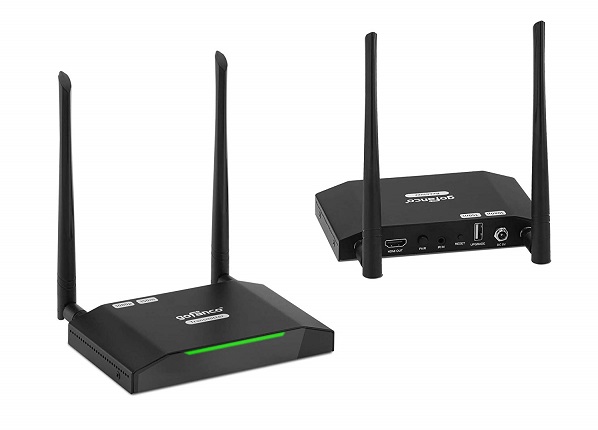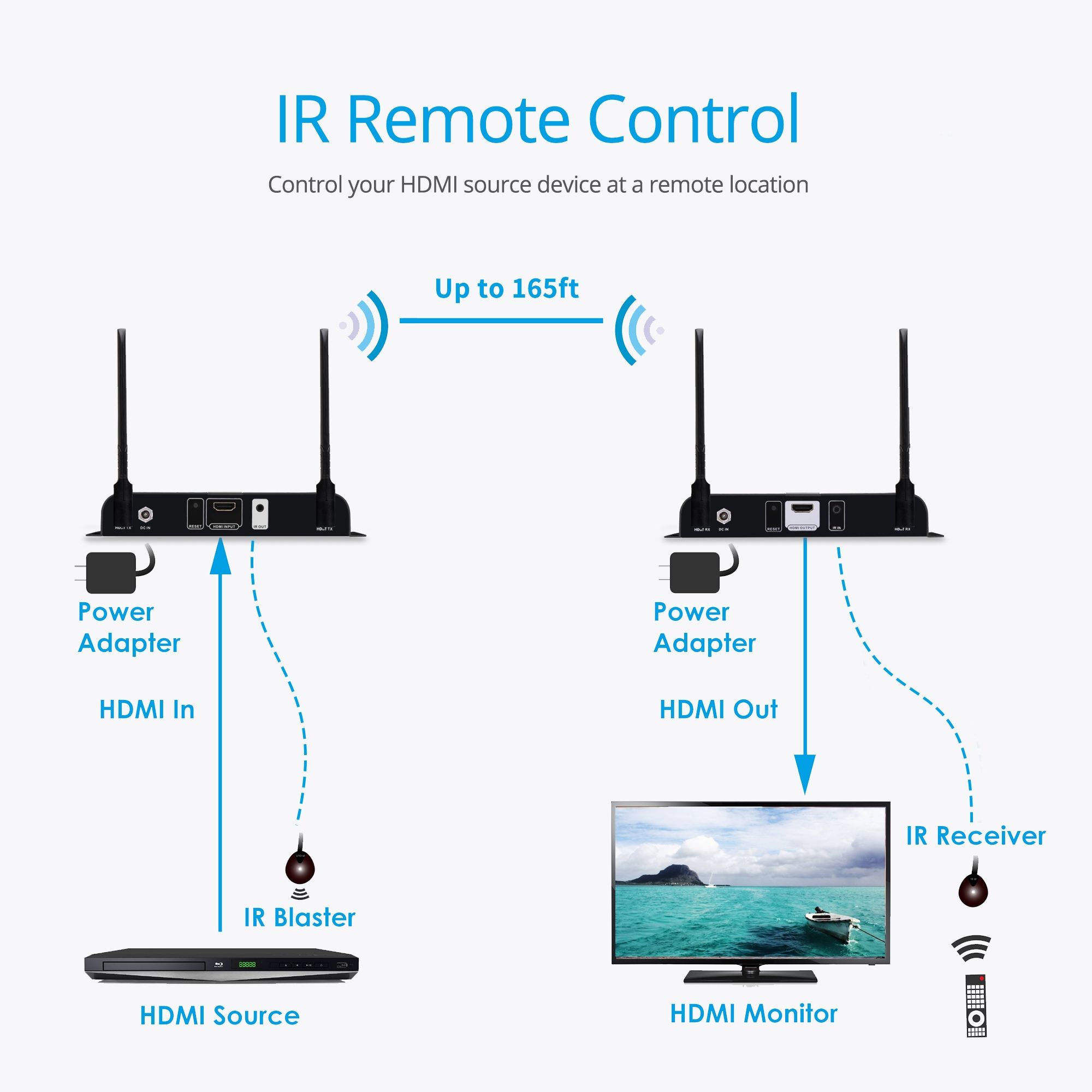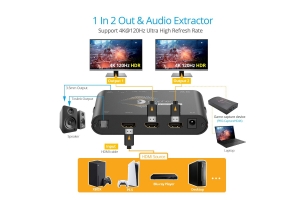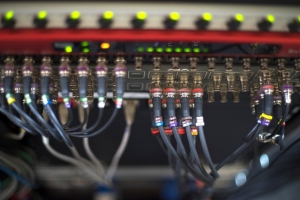We use cookies to make your experience better. To comply with the new e-Privacy directive, we need to ask for your consent to set the cookies. Learn more.
Pros and Cons of Wireless HDMI Extenders

You just learned using an HDMI extender, AKA “Balun”, is the most cost-efficient way to extend HDMI video and audio to remote and distant locations. Now you’re scouring the internet for the right extender and come across a wireless HDMI extender. Sounds interesting.
What is a Wireless HDMI Extender?
Wireless HDMI involves transmitting HD video and audio from your source device, such as a cable box, Blue-Ray player, or laptop, to a TV, monitor, or projector, wirelessly. With a traditional HDMI extender, a transmitter and receiver pass data via an ethernet cable or coaxial cable, but a wireless HDMI extender uses the frequency waves all around us. It is comparable to how routers provide a WiFi signal for our computers to wirelessly communicate with other computers and servers. Think of your router as a transmitter and laptop as a receiver. Instead of connecting these using an ethernet cable to communicate, you use WiFi. Same for wireless HDMI. Instead of using an ethernet cable to connect a transmitter and receiver in a traditional HDMI extender kit, you use a wireless connection. However, this wireless handshake is not using WiFi to make a connection. This can easily be misconstrued.

The Setup
A wireless HDMI extender kit typically includes a transmitter, receiver, and IR extension cables. Just connect the transmitter to your source device via HDMI cable and connect the receiver to your display via HDMI cable and voila! You have just created a wireless connection and the two devices can start talking to each other instantly. Done in literal minutes. Enough of the technical nuances. Should you use a wireless HDMI extender? Let’s look at the Pros and Cons.
PROS
• Cable Clutter Relief. Cables create an unattractive and potentially dangerous environment. You could trip and fall on the cords and they don’t exactly compliment your base boards nicely.
• Ease of Setup and Adjustment. Simply connect your media device to the transmitter and display to the receiver, then turn on all devices. No need to run a long ethernet cable through, around, over, and under obstacles. Want to move the receiver to another display? Do it without the inconvenience of dragging a long ethernet cable around.
• Placement Flexibility. Wireless HDMI extenders provide the ultimate flexibility when it comes to placing your source device and display where you want. You can bypass wired solutions that confine you to locations based on available cabling, while keeping your source equipment in a secure location. Wireless HDMI can extend video and audio to hardly accessible locations where cabling and drilling though walls isn’t practical. Optimize the viewing experience for audiences at a presentation, sermon, demo station, etc. by enhancing the placement of your display.
• Save Time and Resources. Avoid the cost and time of installing a complex and expensive wiring infrastructure. Best of all, you never have to reinstall cabling to adjust device/display placement. Just move the transmitter and receiver to the desired locations in minutes.
• No WiFi Needed. A common misconception is that a wireless HDMI system is dependent on a WiFi network. As explained before, this is not the case, so you don’t have to worry about bandwidth consumption over your network and don’t have to worry about the internet cutting out and losing signal.
CONS
• Slight Latency. Compared to traditional wired HDMI extenders, there is a slight latency ranging from 1ms to 500ms for most models, so it is not recommended to game on. However, this delay is hardly noticeable to the naked eye.
• Reliability. The reliability of your wireless HDMI connection is dependent on more factors than with a traditional HDMI extender. External factors can affect the quality and loss of signal more so with wireless HDMI. This is due to the fact that wireless HDMI can have trouble penetrating through certain structural makeups of a building or home and can experience signal frequency interference. High quality wireless HDMI extenders have a better ability to work around these factors though.
• Price. Price can be a pro and a con. Wireless HDMI extenders are typically more expensive than traditional extenders, but they can also save you money in the long run. It could end up being an investment, due to the advantages from above. It up to you to determine whether the benefits create a higher value than that of a wired solution.








